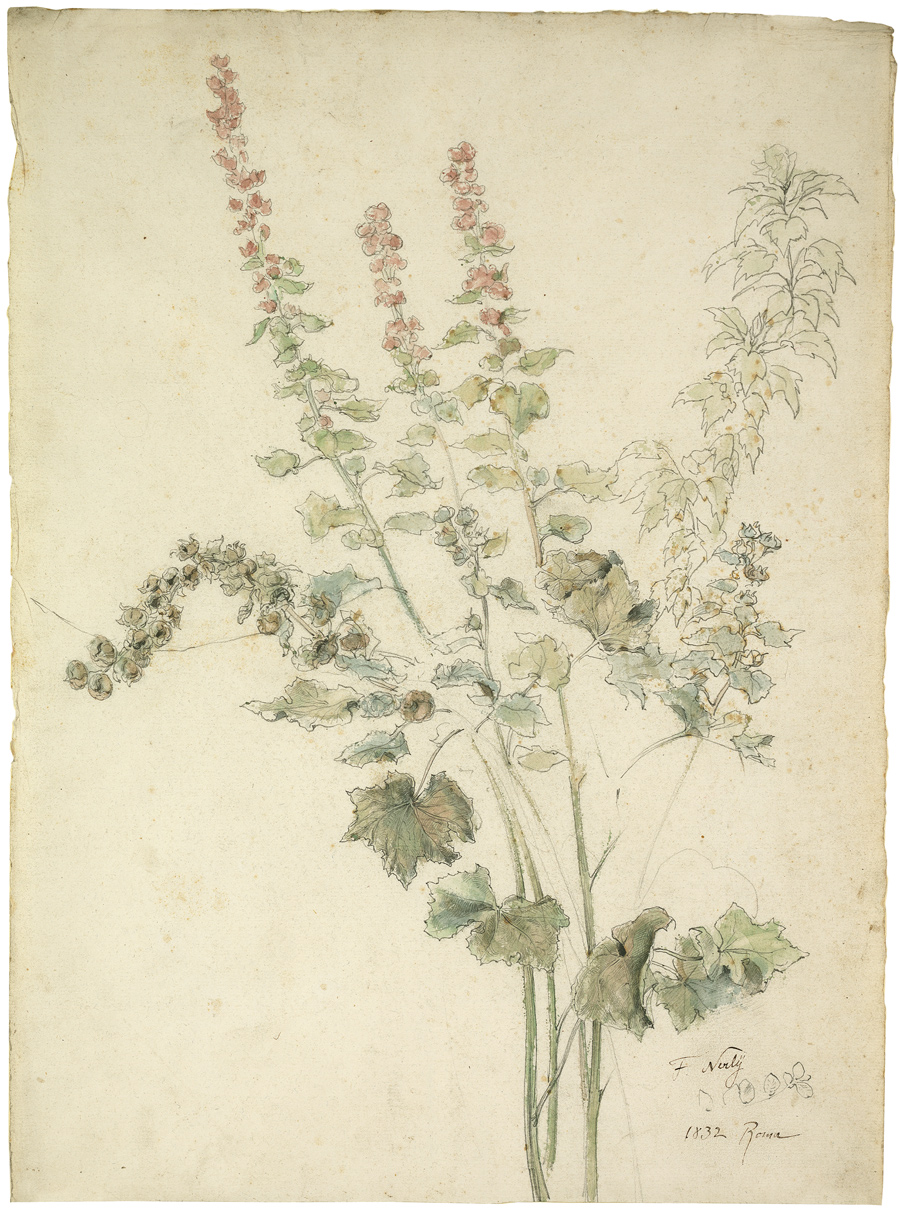Loading the page ...
Friedrich Nerly
(1807 Erfurt – 1878 Venice)
Autumn Mallow Flowers. Watercolour over pencil. 43.7 x 32.4 cm. Signed, dated and inscribed in pen and brown ink: F. Nerlij / 1832 Roma.
Together with the prematurely deceased Franz Horny, Friedrich Nerly is undoubtedly the most significant artistic personality among the pupils of Carl Friedrich von Rumohr (1785–1843). It was in Hamburg in 1823 that Nerly met his mentor and teacher, who was a generation older than he was, and both set off on a tour to Italy in the spring of 1828. In December 1828, after lengthy stays in Florence and Siena, Nerly arrived in Rome, where he was to live and work until 1835. It was not the artistic patrimony of Italy, but the southern landscape that became the decisive experience for the young artist. Nerly had been systematically educated in nature study by Rumohr at an early stage and he devoted himself to capturing the light-filled Mediterranean landscape with bravura and remarkable artistic talent. During his first years in Rome Nerly went on extended walks exploring the environs of the city and the Roman Campagna and spent the summer months in the Sabine Hills. The discovery of the southern landscape was translated into numerous drawings, watercolours and oil studies which have a spontaneity and immediacy in their depiction of nature that is far ahead of their time. Nerly must have been stimulated by his contacts with the like-minded German artists whom he got to know in Rome. The Nazarenes Friedrich Overbeck, Philipp Veit and Peter von Cornelius, belonged to his inner circle of friends, which was later to be joined by Friedrich Preller and Erwin Speckter. He developed a particularly close relationship with Johann Christian Reinhart (1761–1847), one of the leading masters of idealized landscape painting in Rome and, together with Joseph Anton Koch, a beacon for the young German artists living in the Eternal City.
This Study of Autumn Mallow Flowers bears eloquent testimony to the remarkable freshness and directness of the nature studies from Nerly’s Roman period. A keen and accurate pencil technique has been employed to convincingly render the texture of the faded leaves on the mallow sprigs. With a few sure lines Nerly has sketched the thin, supple stalks of the plant, thus lending the picture a lively rhythm. Nerly is a master of the use of nuancing to make the most of just a few colours. The colouring has been reduced to sparse green, grey and brown tones, to which the mauve flowers make a subtle contrast. The asymmetrical arrangement of the stalks, leaves and flowers creates a vivid mise-en-page. Nerly’s highly sensitive and pensive study is more than just a portrayal of nature: it is a timeless image of the eternal cycle of rise and fall.
